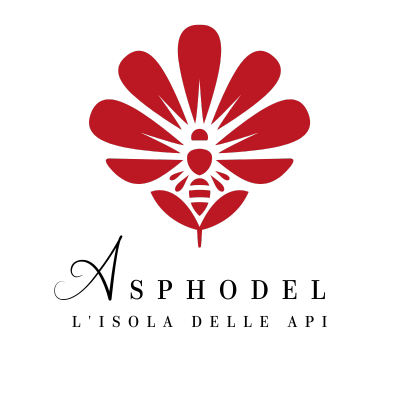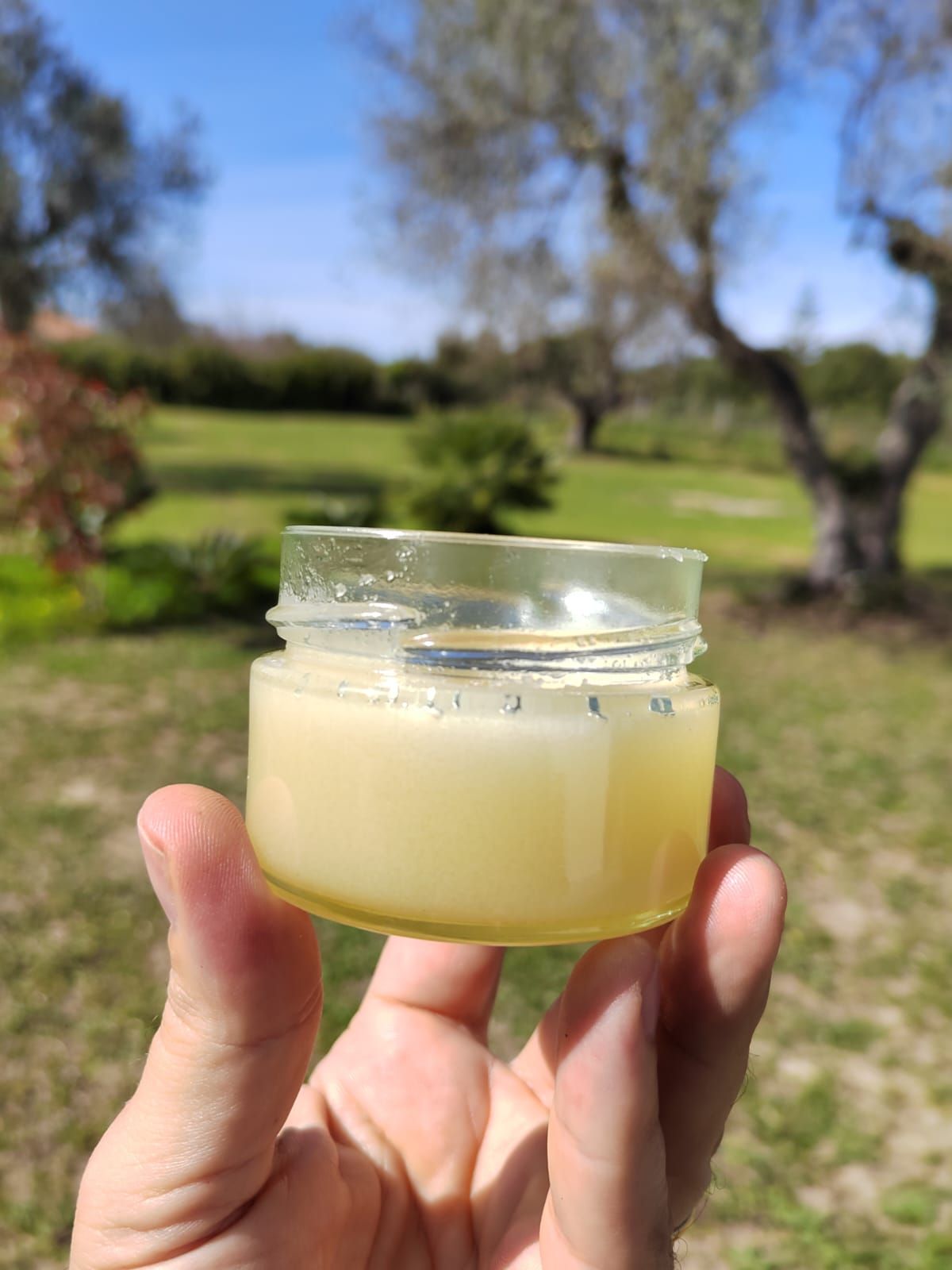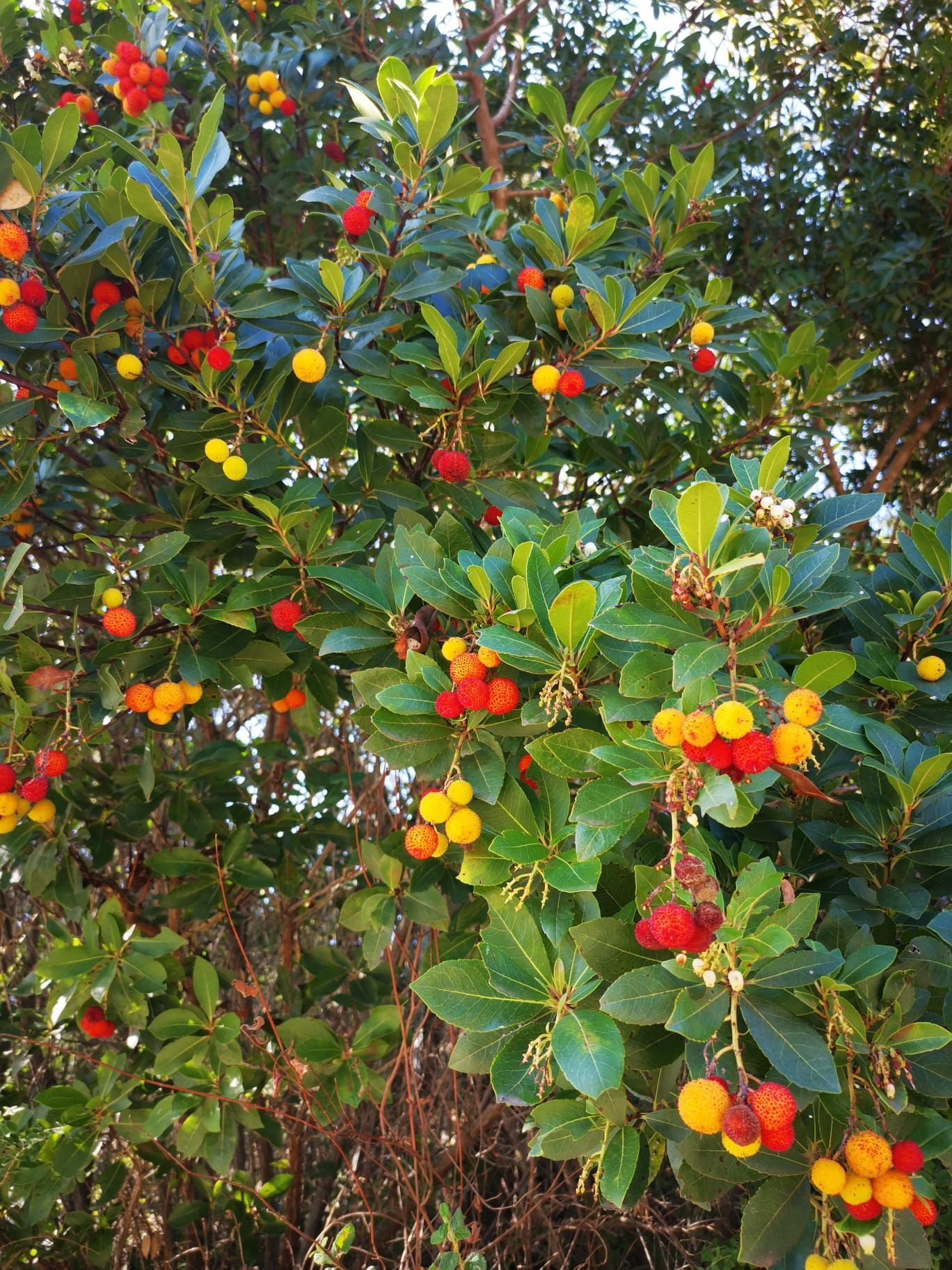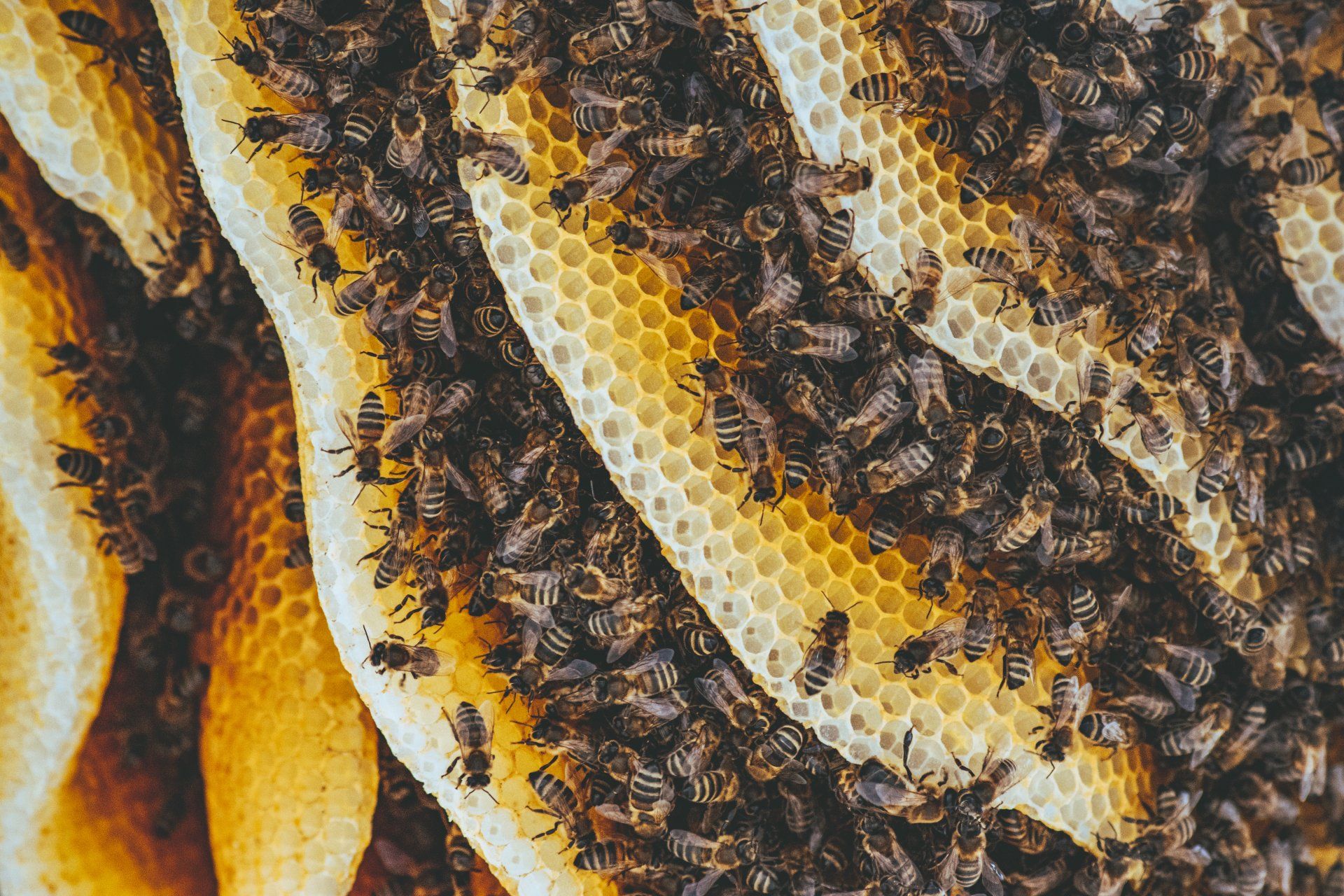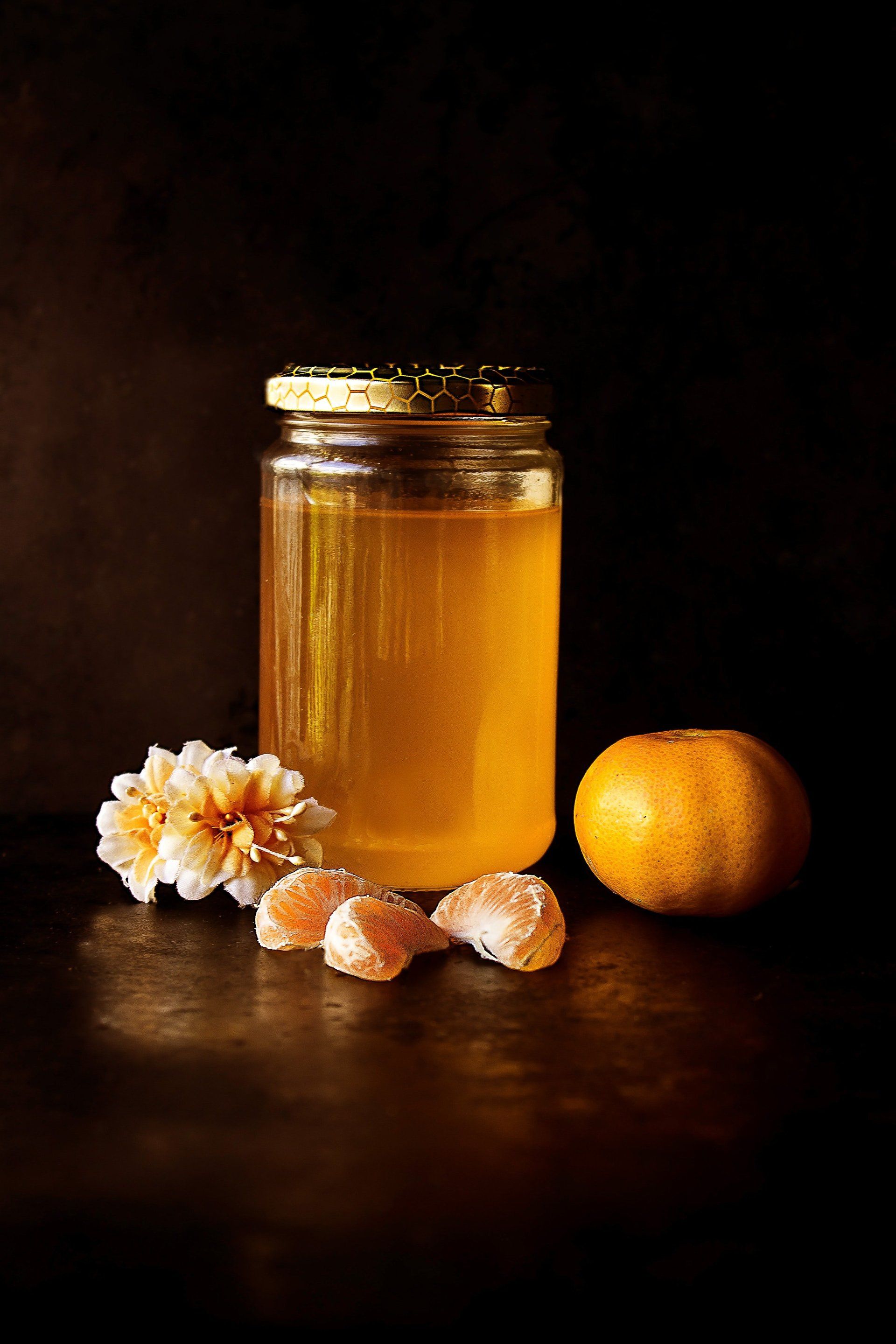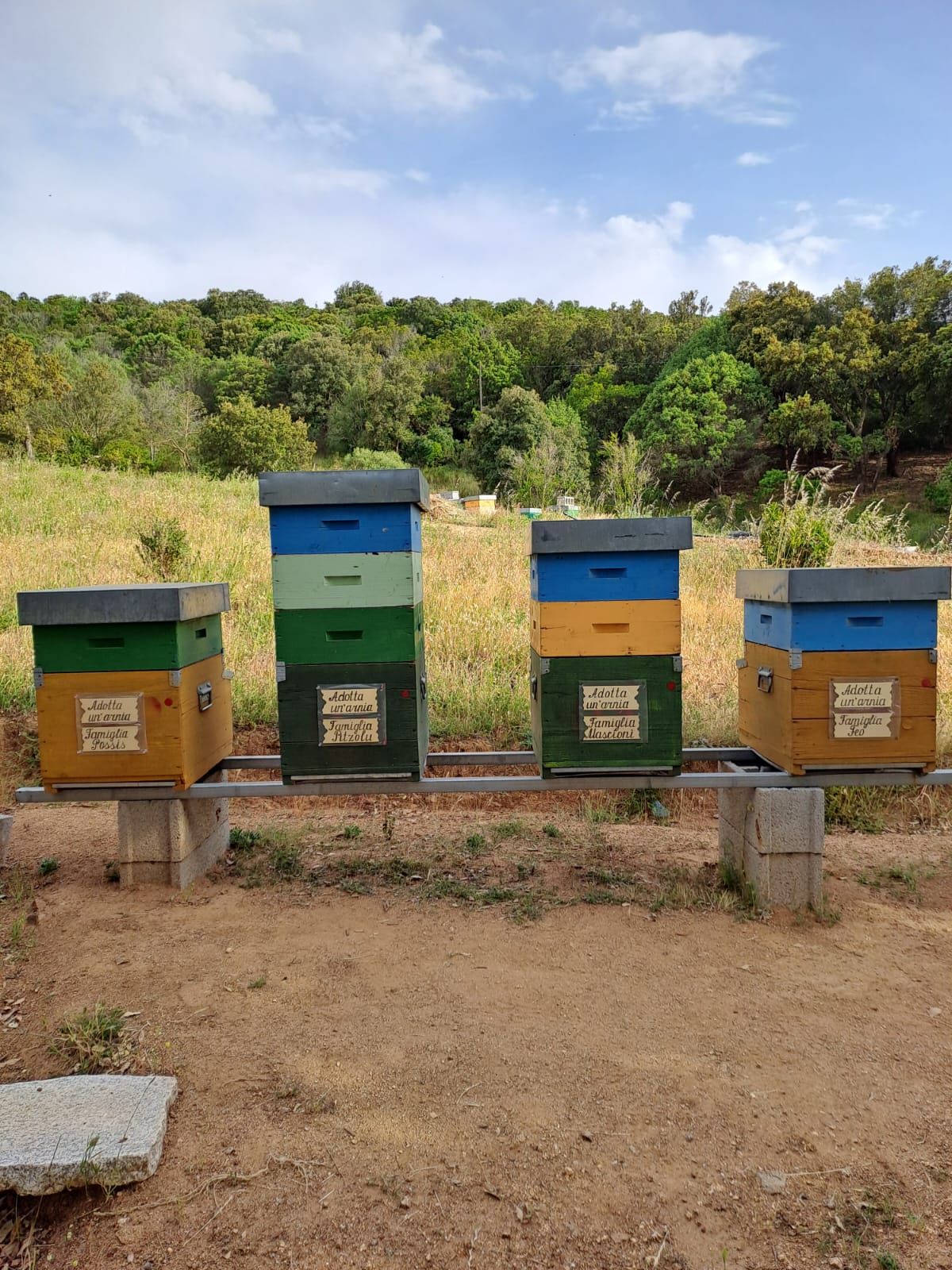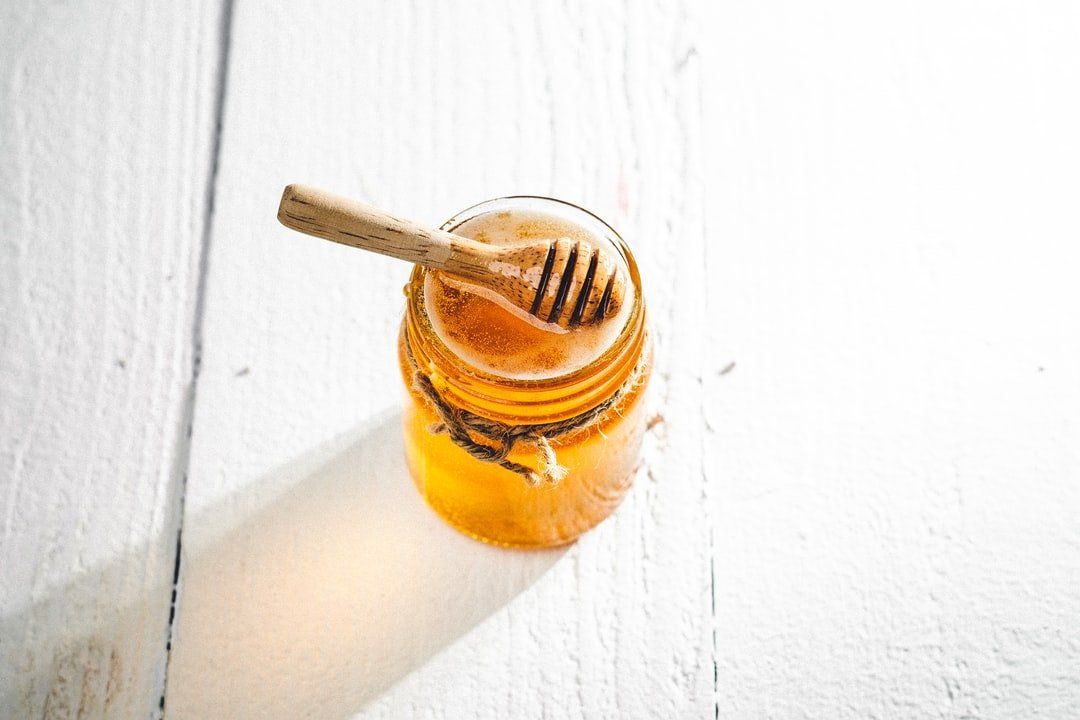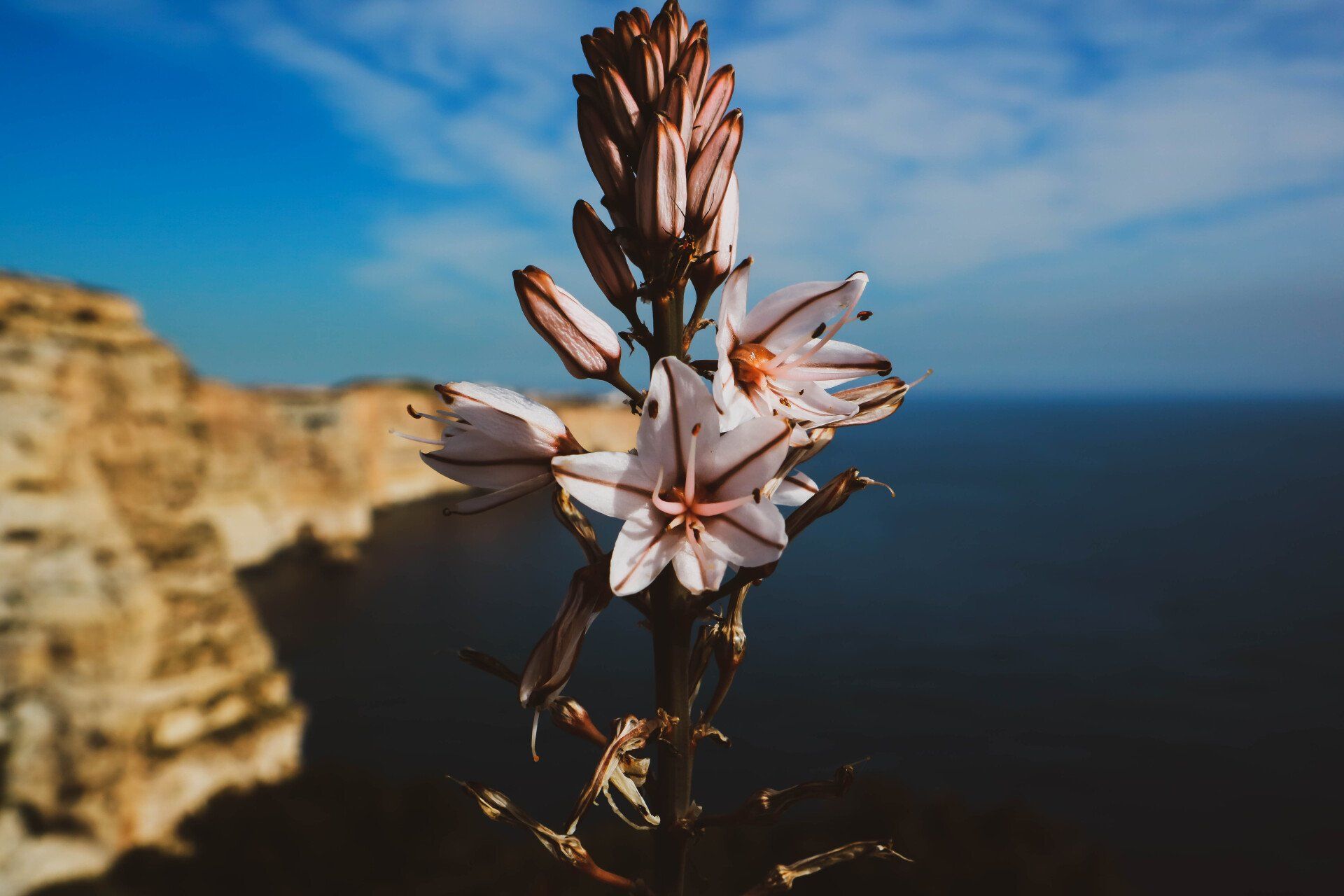What is strawberry tree honey?
sites • 6 September 2021
The answer is simple: probably the healthiest and surely the most bitter honey in the world.
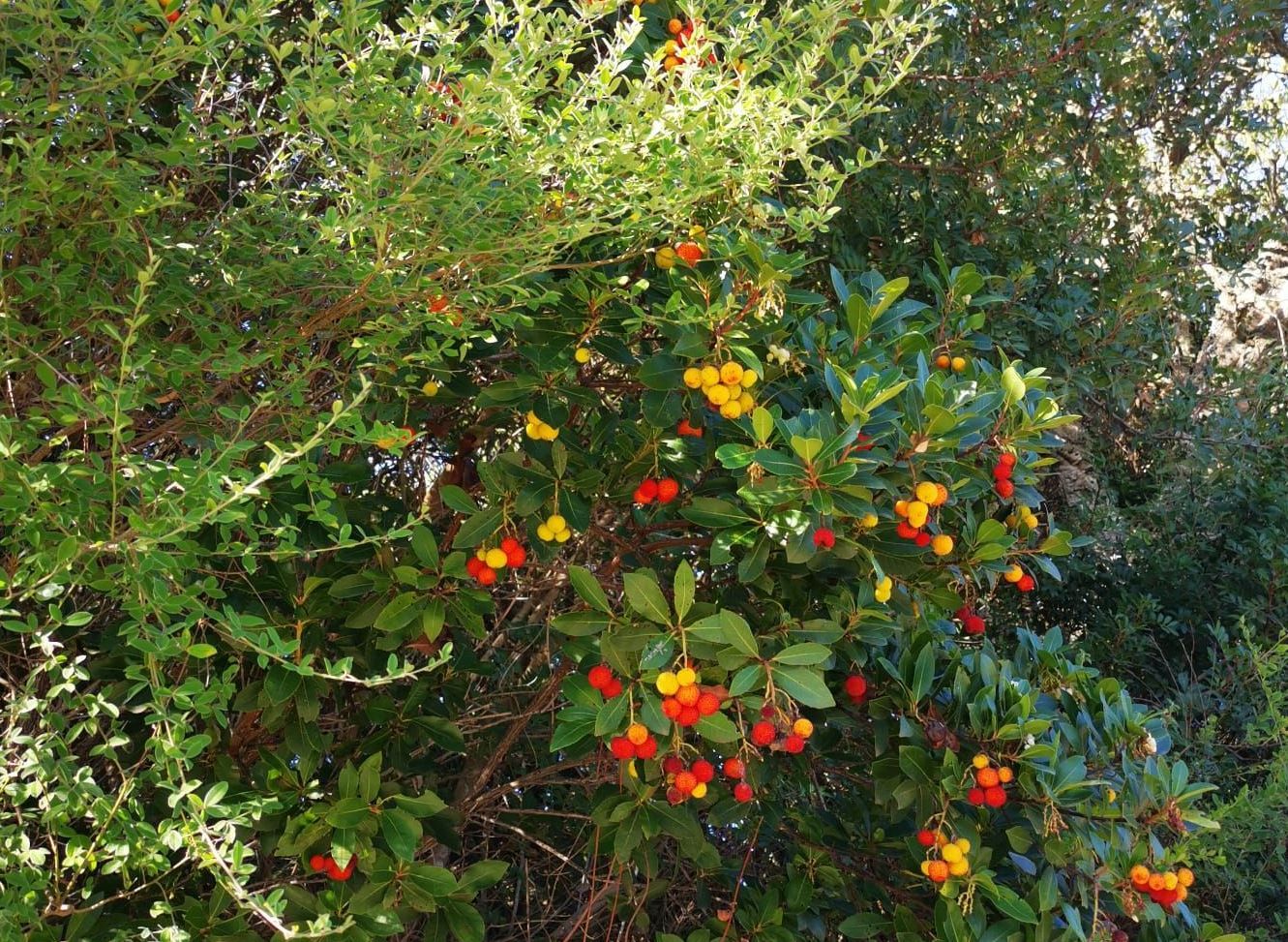
If it is very difficult to say which honey is the best, the healthiest or the sweetest, but we can definitely say which one is the most bitter: Strawberry tree honey aka Arbutus honey. Some people say we shouldn’t even call it honey – it would be a contradiction to the very definition of it. But beyond its health recommendations, there are people who enjoy it a lot, comparing it to dark chocolate and single malt whiskey.
Arbutus unedo L, known as Miele di Corbezzolo or Strawberry tree (English), Arbousier (French), Corbezzolo (Italian), Erdbeerbaum (German), Madroño (Spanish), Lännenmansi (Finnish)
Arbutus is an evergreen shrub or small tree in the genus Arbutus, family Ericaceae, native to the warm temperate Mediterranean region and western Europe, north to western France and Ireland.
We can find it in: Portugal, Spain and southeastern France; southward in Algeria, Morocco, Libya, and Tunisia, and eastward in Italy, Slovenia, Croatia, Greece, Turkey, Cyprus, Lebanon, Syria and Israel. It is also found in western France, Albania, Bulgaria and southwestern Ireland.
In Ireland it is known as either “Irish strawberry tree”, or cain or cane apple (from the Irish name for the tree, caithne), or sometimes Killarney strawberry tree.
Arbutus is a genus with 12 accepted species, separated in 2 groups.
One including species from the Mediterranean Basin and one from the western North America.
Arbutus unedo, from which this honey is made (from Mediterranean Basin, western France, and western Ireland) is closely related to the Mediterranean Basin species such as A. andrachne aka Greek strawberry tree (from Southeastern Europe and southwestern Asia) and A. canariensis aka Canary madrone (from Canary Islands).
The other group contains more species and hybrids (like Arbutus ‘Marina’ or Arbutus × andrachnoides).
– Arbutus menziesii, native to the Pacific Northwest and Northern California;
– Arbutus arizonica, in New Mexico, Arizona and western Mexico south to Jalisco;
– Arbutus mollis Kunth (Mexico) and so on.
Characteristics of Arbutus unedo:
The tree: grows to 5–10 m (16–33 ft) tall, rarely up to 15 m (49 ft), with a trunk diameter of up to 80 cm (31 in). It grows mainly in winter, when it has a high rate of photosynthesis.
Leaves: dark green and glossy, 5–10 cm (2–4 in) long and 2–3 cm (0.79–1.18 in) broad, with a serrated margin. The leaf extract contains several phenolic compounds, like tannins, flavonoids, phenolic glycosides, and α-tocopherol and that’s why the leaves are used as astringent, diuretic, urinary antiseptic, antidiarrheal, and depurative and, also more recently, in the therapy of hypertension, diabetes, and inflammatory diseases.
Flowers: are hermaphrodite, white (rarely pale pink), bell-shaped, 4–6 mm (0.16–0.24 in) diameter, produced produced in clusters (15–30 flowers) on red stems, in autumn. It blooms from September to December, possibly to April. The flowers are pollinated by bees, and have a mild sweet scent.
Pollen: large quantities (diam 60 μm), typical ericaceous, with compound pollen grain. Bees visit the flowers more for the nectar and less for the pollen.
Fruit: a red berry reminding of real strawberry, 1–2 cm (0.39–0.79 in) diameter, with a rough surface. It matures in about 12 months, in autumn from August to November, at the same time as the next flowering. It is edible but sour – hence its latin name “unedo” – meaning “only one” referring to capacity of eating only one fruit. Yet, other people say the fruit is sweet when reddish, and tastes similar to a fig when fully mature.
The fruit is processed into traditional products such as alcoholic beverages, jams, jellies, and marmalades. They are known in folk medicine as antiseptic, diuretic, and laxative.
There are only several regions in the world with a strawberry tree population large enough to support honey production: central and southern Italy, mainly the island of Sardinia, but also Greece and Portugal and parts of the United Kingdom.
Due to its bitter taste it is produced in very reduced quantities. In Sardinia we can find highly appreciated strawberry tree honey, with market prices from 4 to 8 times higher than those of common sweet honey, probably because of its growing reputation as the healthiest honey in the world.
Portugal is also a producer, yet with less popularity.
All its characteristics depend a lot on the other nectar types and pollen harvested by the bees. Unifloral honey is not completely unifloral (honey bees are not so selective).
• In the study Physicochemical Parameters and Bioactive Compounds of Strawberry Tree (Arbutus unedo L.) Honey, by Pablo A. Ulloa et al. from Portugal and published in 2015, 31 pollen types were found in the strawberry tree honey samples presented. Pollen from Echium plantagineum, Ceratonia siliqua, Cistaceae, Lavandula stoechas, Reseda luteola, and Citrus spp. types was present in all honey samples (86%). The mean pollen content of artubus was of 31.96%.
The study investigated strawberry tree honey from South Portugal.
Color: amber-colored when liquid and beige-brown when crystallized; depending on the region, species and weather, it may have different shades of caramel and cocoa brown, to very dark colors, even black.
Smell: intense, characteristic, ripe, and similar to that of coffee;
Aroma: marked and pungent, recalling ivy leaves, bitter herbs and cocoa beans. A total of 28 aroma compounds have been identified, but only norisoprenoid compounds such as α-isophorone, β-isophorone and 4-oxoisophorone, have been recognized as specific floral origin markers of the strawberry-tree honey.
Taste: slightly sweet initially and decidedly bitter and astringent later;
Total phenolic content:
– varies a lot from region to region: from 78.96 mg of GAE/100 g in Italian commercial strawberry tree honey to 117.6 in Portuguese strawberry tree.
– Homogentisic acid (2,5-dihydroxyphenylacetic acid) aka HGA is the most abundant phenolic compound in this type of honey, representing approximately 50–60% of total phenols, an average content of 378 +/- 92 mg/kg, providing an important contribution to the high antioxidant and antiradical activities of strawberry tree honey.
It has antioxidant, antiradical and protective effects, such as defensive actions against thermal cholesterol degradation;
The homogentisic acid can be used as a marker of strawberry-tree (Arbutus unedo) honey, since it was not detected in any of the other monofloral honeys. Other complementary markers can be c,t-ABA, t,t-ABA and unedone.
Total flavonoid content (e.g., quercetin, kaempferol and pinocembrin)
The south Portuguese strawberry tree honey had significantly lower flavonoid content than the other samples of unifloral honeys (from the same area): 5.33 mg QE/100 g
By comparison:
Acacia (Robinia pseudoacacia): 6.73 mg QE/100 g
Savory (Satureja hortensis): 21.16 mg of QE/100 g
Rosemary: 12.4 mg of catechin equivalents (CEs)/100 g of honey
Viper’s bugloss: 34.3 mg of CEs/100 g of honey
Heather: 58.7 mg of CEs/100 g of honey
Yet, after a study made on strawberry tree honey samples from different regions of Sardinia, Italy, the flavonoid content had other concentrations:
Monti: 92.68 ± 14.17 mg CAE/kg
Luras: 69.96 ± 3.62 mg CAE/kg
Sadali: 65.74 ± 2.50 mg CAE/kg
Olbia: 66.18 ± 0.61 mg CAE/kg
Berchidda: 108.20 ± 2.69 mg CAE/kg
Flavonoids inhibit auto-oxidation reactions and have a scavenging effect on free radicals. Their concentrations in honey depend on various factors, including plant species used by bees, plant health, geographical origin, and climatic characteristics of the local production.
Antioxidant activity – measured using DPPH assay.
The antioxidant capacity of strawberry tree honey showed values of 18.85 mg ascorbic acid equivalent antioxidant content (AEAC)/100 of honey and 9.92 mg of quercetin equivalent antioxidant content (QEAC)/100 g of honey. The values were similar to multifloral honey, Indian honeys, raspberry honey, rape honey.
South Portugal Strawberry tree: 43.46%
North Portugal strawberry tree honey 64.2%
Acacia: 35.8% – 45.3%
Lime: 36.6% – 40.9%
Sunflower: 40.7% – 49.2%
Rhododendron: 54.05% (mean value)
Rosemary: 4.5% – 59.3%
Orange: 8.8% – 23.2%
Thyme: 35.8% – 47.3%
Eucalyptus: 27.7% (mean value)
Abbamele is a typical product originally from Sardinia island, obtained from the recuperation of this kind of honey from combs, with antioxidant activities comparable to those of well-known products such as red wines and vegetables.
Abbamele is made from the cooked must of honeycombs, after the honey has been extracted. It’s a great example of traditional peasant cooking: taking something “worthless” and turning it into a culinary treasure. It has a toasty flavor that has hints of coffee and caramel. Not too sweet, it’s good on cheese, fresh fruit or even drizzled on a plate of pasta.
Strawberry tree honey has the highest antioxidant activity, when compared with other kinds of honey such as: sulla, chestnut, chicory, dandelion, eucalyptus, citrus, and acacia. Or even manuka honey (study).
Where can we find strawberry tree honey?
It’s not easy to find it. As it is not the regular sweet aromatic honey we are used to. It attracts more and more buyers due to its prestige as the healthiest of all honeys, surpassing manuka or gelam honeys. We take it as medicine and not as food. At least some of us…
We can find strawberry honey if we go to Sardinia, Italy, as there are some serious producers there, selling it at high prices. The best strawberry tree honey comes from Berchidda region, Sardinia, Italy.
Don’t be surprised if you taste a jar of honey from Greece and its taste is different than a jar bough from somewhere else. The geographical environment is very important. The other nectars hargested by honey bees, which are present in the strawberry tree honey, will influence the taste a lot.
